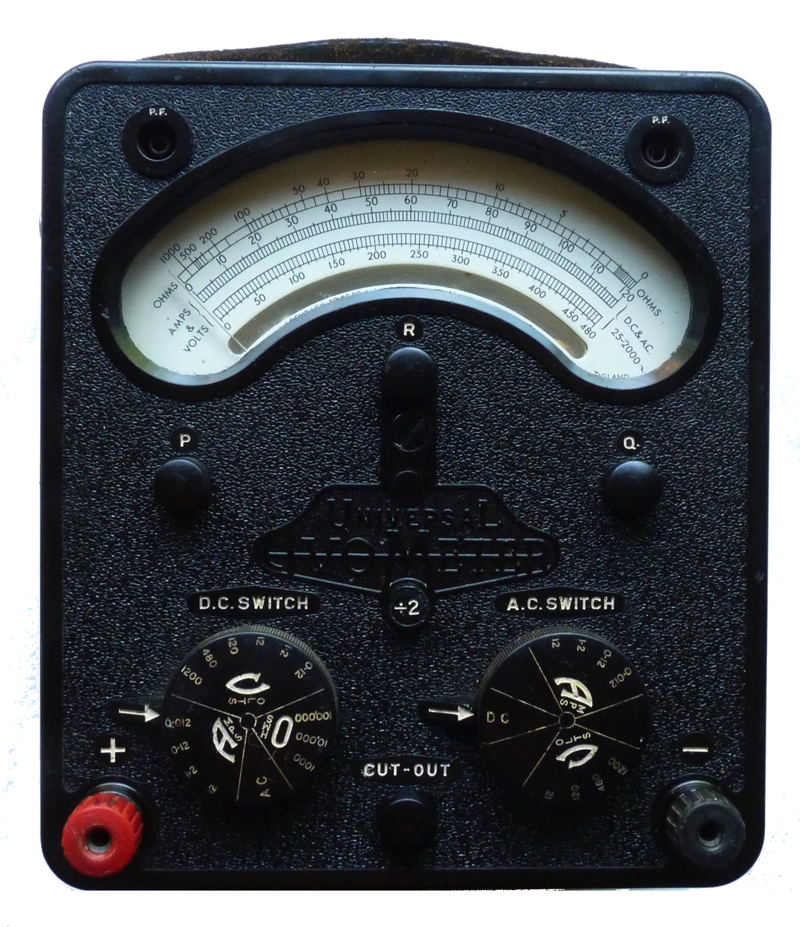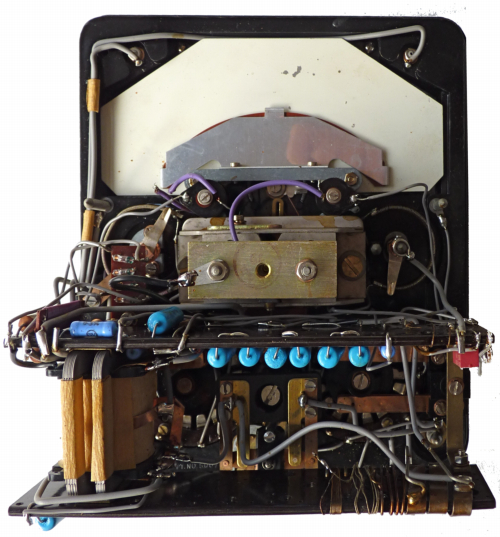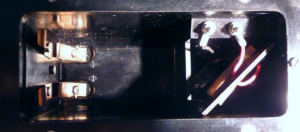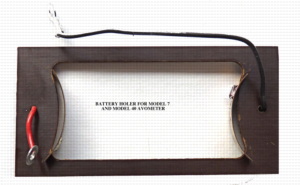
AVO Model 40 Mk2 1975 working Given to me by Ian Griffiths
I also have several others:
1956
1966 given to me by Tony Piggott
1978
The AVOmeter model 40 was a development of the original AVO multimeter which started life back in 1923, and although it was initially a DC-only instrument many of its features remained almost unaltered right through to the meter shown here. In particular the mirror scale, the "smiley" meter scale, the two switches and two terminals. AVO multimeters are renowned for their reliability and robustness, the early incorporation of a mechanically operated cut out linked to the meter movement and the two switch range selection system have endeared these meters to generations of electrical and electronic engineers. By 1965, the company had already created over one million AVOmeters. The firm also produced a range of smaller multimeters, the AVO Minor and later the AVO Multiminor as well as a number of special instruments such as the Heavy Duty model. Production of the iconic model 8 meter ceased in 2008. Though known for their Avometer general purpose multimeters, they made a wide range of test gear including valve testers, oscillators and light meters. You will find more information here about these instruments and other similar models. AVO also produced a range of smaller multimeters which are described here.

AVO Model 40 Mk2 1975 working Given to me by Ian Griffiths
I also have several others:
1956
1966 given to me by Tony Piggott
1978
The model 40 which has a 3 mA movement is housed in a Bakelite case. This is the second generation of the general purpose model introduced in 1940 which in turn is an updated version of the original AVO meter and preceded the the more sensitive model 7 which was renowned for its reliability and robustness, the incorporation of a mechanically operated cut out linked to the meter movement. The two switch range selection system have endeared the latter to generations of radio and television engineers. Indeed many service manuals for radios include voltage values based on the model 7.

Internal
view


Battery compartment and adapter to take D cell
Batteries The model 40 used a rectangular 1.5 volt cell with a brass terminal and a flying lead for the negative connection. Surprisingly AVO retained the casing design long after the rectangular batteries were unavailable. The later models such as this from 1975 had an adapter to accommodate a cylindrical D cell. For the highest resistance range two 4.5 volt cycle lamp batteries with brass spring connectors were used.
As a replacement for the latter you might like to wire in a lead
with a push
fit connectors to suit the more commonly available and cheaper 9 volt
PP3 battery.
How old is it? Most AVO meters can be dated from the last 3 or 4 digits of the serial number under the right hand end of the scale or in the case of later models such as this from a label on the right hand side of the case. These define the month and year of manufacture. For example this one was made in December 1975.
What is it worth? Both of these were gifts, so lets say £10. The model 8 being more sensitive is probably a better investment, you should be able to buy a model 8 MkII or MkIII for £20 or so which you will find equally as good as the later models which often sell for much more.
What is the difference between this model and the earlier one?
The Mk2
has two additional resistors and terminals to measure power factor
(with an additional unit) but is otherwise electrically the same
although the meter movement has been updated and many of the wire wound
resistors have been replaced with precision hi stab units, the meter
rectifier for the AC ranges has been replaced by four germanium diodes
and the front panel equipped with the more familiar red and black
terminals. Externally the two range selector knobs are deeper and are
more easily gripped. Look here to compare them avo40.html
For further information have a look at my pages on the model 8
AVO and Test Meter No1 here and here

